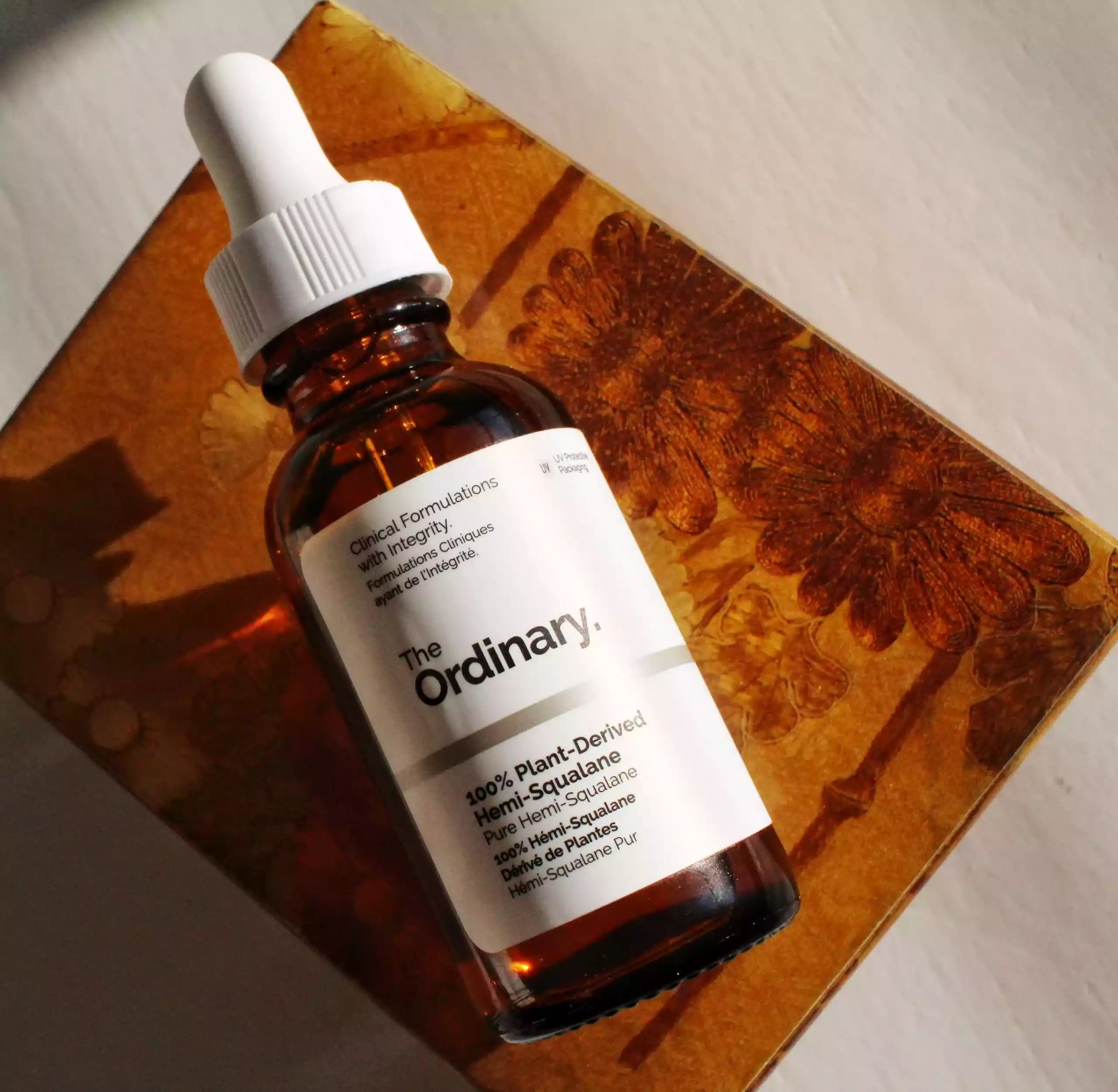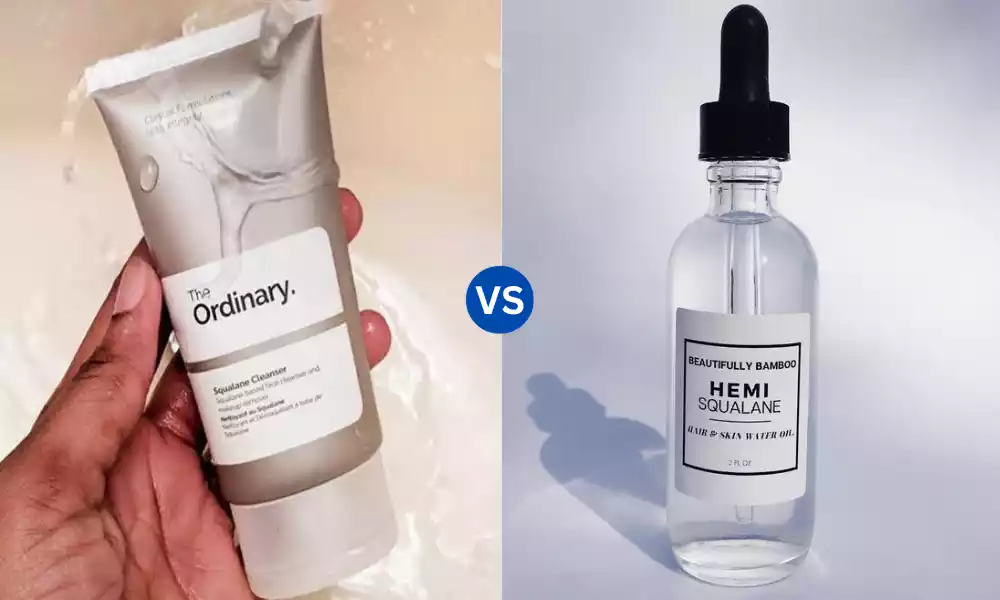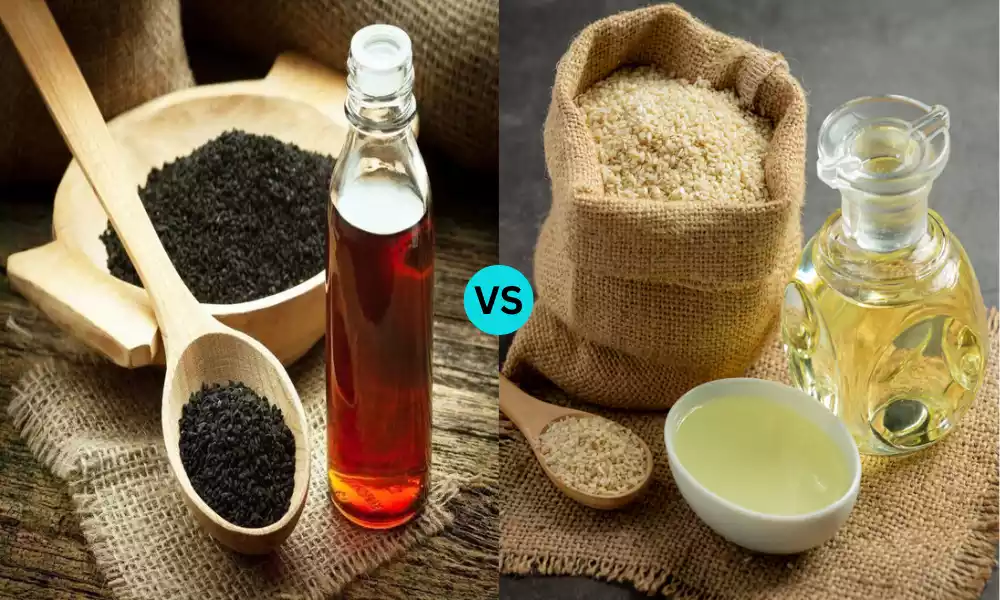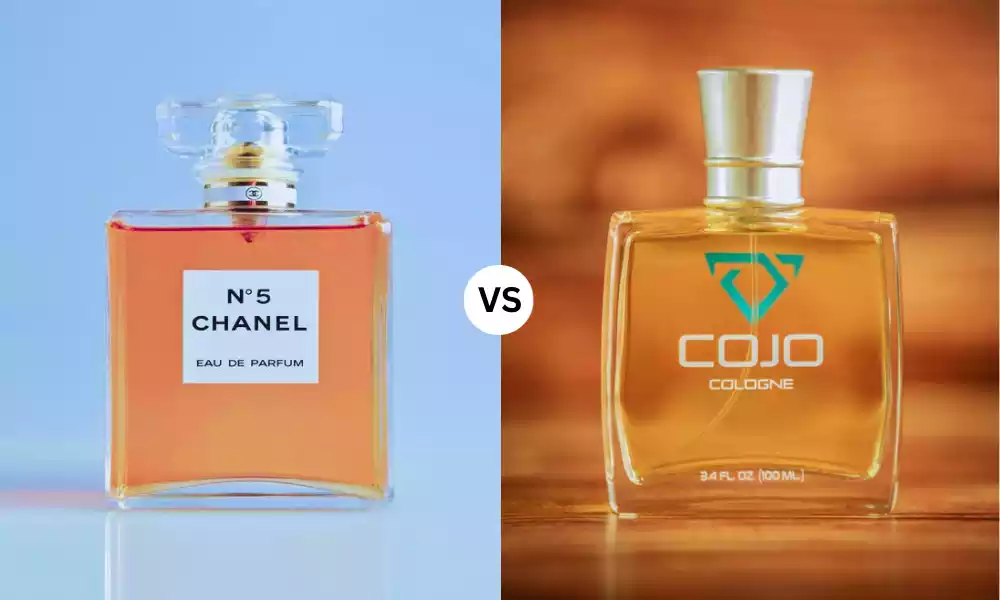Squalane and Hemi-squalane are two distinct but related compounds that have found widespread use in the beauty and skincare industry. Squalane, derived from natural sources such as olives and sugarcane, is prized for its exceptional moisturizing properties and skin-friendly characteristics. On the other hand, hemi-squalane, a synthetic derivative, offers a lightweight and non-greasy texture, making it a popular choice in haircare and cosmetic products.
Both of these compounds have transformed the way we approach skincare, providing effective solutions for hydration, anti-aging, and hair conditioning in modern beauty routines.
What is Squalane?
Squalane is a natural organic compound that is a saturated derivative of squalene. It is a clear, colorless, and odorless oil that is commonly used in various skincare and cosmetic products, as well as in pharmaceuticals and industrial applications. Squalane is valued for its excellent moisturizing properties, its ability to improve skin barrier function, and its overall skin-friendliness.

Key characteristics and uses of squalane include:
- Skin Moisturization: Squalane is highly effective at moisturizing the skin. It is non-comedogenic, which means it doesn’t clog pores, making it suitable for all skin types, including sensitive and acne-prone skin.
- Skin Barrier Protection: Squalane helps strengthen the skin’s natural barrier function, which can aid in preventing moisture loss and protecting the skin from environmental stressors.
- Anti-aging Benefits: Squalane is known for its antioxidant properties, which can help combat free radical damage and signs of aging, such as fine lines and wrinkles.
- Ingredient in Skincare Products: It is a popular ingredient in skincare products such as moisturizers, serums, and creams, as it can enhance the overall texture and feel of the product.
- Pharmaceutical Uses: Squalane is also used in some pharmaceutical formulations, particularly in drug delivery systems and as an adjuvant in vaccines.
- Industrial Applications: Beyond skincare and pharmaceuticals, squalane has industrial applications as a lubricant, in the production of certain plastics, and as an ingredient in some industrial and automotive products.
Squalane can be sourced from various natural sources, including shark liver oil, olive oil, rice bran oil, and sugarcane. However, due to concerns about the sustainability and ethical implications of sourcing it from shark liver oil, there has been a shift towards using plant-based sources, such as sugarcane-derived squalane, which is a more environmentally friendly and cruelty-free alternative.
What is Hemi-squalane?
Hemi-squalane is a synthetic, lightweight, and clear oil-like compound derived from squalane, which is itself derived from squalene. It is often used in the cosmetics and personal care industry as well as in some industrial applications. Hemi-squalane shares some similarities with squalane but has distinct characteristics that make it suitable for specific purposes.

Here are some key points about hemi-squalane:
- Molecular Structure: Hemi-squalane has a shorter carbon chain compared to squalane. While squalane is fully saturated and contains 30 carbon atoms, hemi-squalane typically contains 13 to 16 carbon atoms in its structure.
- Texture and Feel: Hemi-squalane is known for its lightweight and non-greasy texture. It has a silky-smooth feel when applied to the skin or hair, making it suitable for formulations where a lightweight and elegant texture is desired.
- Skincare and Haircare: Hemi-squalane is commonly used in skincare and haircare products. Its lightweight nature makes it ideal for moisturizers, serums, hair conditioners, and other products where a light, non-oily finish is desired.
- Hair Conditioning: It can be particularly beneficial for hair care formulations, as it helps improve hair manageability, reduce frizz, and impart shine without making the hair feel heavy or greasy.
- Solvent Properties: Hemi-squalane can also function as a solvent, helping to dissolve other cosmetic ingredients and improve the spreadability and texture of formulations.
- Versatility: Due to its versatility and compatibility with a wide range of cosmetic ingredients, hemi-squalane can be found in various personal care products, including moisturizers, sunscreens, makeup products, and hair treatments.
- Synthetic Production: Hemi-squalane is typically synthesized from renewable sources, such as sugarcane or other plant-derived feedstocks. This synthetic production process ensures a consistent and sustainable supply of the compound.
Hemi-squalane is a synthetic derivative of squalane, known for its lightweight and non-greasy texture, making it suitable for skincare and haircare formulations. It is often used to improve the feel and performance of cosmetic products while offering benefits like hydration and shine without a heavy or oily residue.
Comparison Table of Squalane and Hemi-squalane
Here’s a comparison table highlighting the key differences between squalane and hemi-squalane:
| Characteristic | Squalane | Hemi-squalane |
|---|---|---|
| Molecular Structure | Fully saturated, 30 carbon atoms | Shorter carbon chain, 13-16 carbon atoms |
| Source | Natural (shark liver oil, plant oils) | Synthetic (often derived from plant sources) |
| Texture and Feel | Emollient, somewhat heavier | Lightweight, non-greasy, silky-smooth |
| Comedogenic Rating | Non-comedogenic (does not clog pores) | Non-comedogenic (does not clog pores) |
| Skin Barrier Protection | Strengthens skin barrier | May enhance skin barrier function |
| Moisturization | Excellent moisturizing properties | Effective moisturizer |
| Anti-aging Benefits | Antioxidant properties, anti-aging | Limited anti-aging benefits |
| Haircare Applications | Used in hair products, e.g., conditioners | Beneficial for hair conditioning |
| Solvent Properties | Limited solvent properties | Effective solvent for some ingredients |
| Sustainability | Sourcing can be unsustainable (shark liver oil) | Generally derived from renewable sources |
| Environmental Impact | Concerns about ethical sourcing | More environmentally friendly option |
| Industrial Applications | Used in lubricants and some plastics | Limited industrial applications |
The specific properties and uses of these compounds may vary depending on the formulation and concentration in the product. While squalane is often chosen for its deep moisturization and anti-aging benefits in skincare, hemi-squalane is valued for its lightweight texture and versatility, particularly in products where a non-greasy finish is desired, such as haircare and some skincare formulations. Additionally, hemi-squalane is typically derived from more sustainable and ethical sources, making it a preferred choice for some consumers and manufacturers.
How to Incorporate Squalane and Hemi-squalane into Your Beauty Routine
Incorporating squalane and hemi-squalane into your beauty routine can be beneficial for your skin and hair. These lightweight, non-greasy oils offer moisturizing and conditioning properties. Here are some ways to use them in your beauty regimen:
Squalane
- Moisturizer: Apply squalane as a standalone moisturizer. After cleansing and toning your face, dispense a few drops of squalane and gently massage it into your skin. It’s suitable for both morning and evening use.
- Hydration Booster: Mix a few drops of squalane with your regular moisturizer to boost its hydrating properties. This is especially helpful during the dry, winter months.
- Serum: Use squalane as a serum. Apply it after cleansing and toning but before your moisturizer. This can help lock in moisture and provide additional hydration.
- Under-eye Treatment: Dab a small amount of squalane around your eye area to combat dryness and reduce the appearance of fine lines.
- Makeup Primer: Apply a thin layer of squalane to create a smooth canvas for makeup application. It can help makeup go on more evenly and last longer.
- Body Moisturizer: Extend squalane’s benefits to your body. After a shower or bath, apply it to damp skin to seal in moisture.
Hemi-squalane
- Hair Conditioner: Apply hemi-squalane to damp hair as a leave-in conditioner or a styling product. It helps reduce frizz, adds shine, and keeps your hair manageable. Start with a small amount and adjust as needed.
- Hair Mask: Mix hemi-squalane with other hair-loving ingredients like coconut oil or aloe vera gel to create a DIY hair mask. Apply it to your hair, leave it on for 30 minutes to an hour, and then rinse thoroughly for deep conditioning.
- Skincare Emulsion: Hemi-squalane can be incorporated into DIY skincare formulations. Mix it with essential oils or other skincare ingredients to create customized serums or moisturizers.
- Cuticle Oil: Apply a small amount of hemi-squalane to your cuticles to keep them soft and prevent them from drying out.
- Shaving Oil: Use hemi-squalane as a shaving oil. Apply it to the area to be shaved before using your razor. It can provide a smooth glide and reduce the risk of irritation.
- Makeup Remover: Hemi-squalane can effectively remove makeup, including waterproof mascara and long-wear foundation. Apply it to a cotton pad and gently wipe away makeup.
Remember to patch-test any new skincare or haircare product on a small area of your skin to check for potential allergies or sensitivities. Also, consider your skin and hair type when incorporating these oils into your routine, as the amount and frequency of use can vary depending on individual needs.
Side Effects and Safety Considerations
Squalane and hemi-squalane are generally considered safe for most people when used as directed. Like any skincare or haircare product, there are potential side effects and safety considerations to be aware of:
Squalane:
- Allergic Reactions: While squalane is non-comedogenic and non-irritating for most people, individuals with sensitive skin may still experience allergic reactions. It’s advisable to perform a patch test by applying a small amount of squalane to a small area of your skin and monitoring it for 24-48 hours for any adverse reactions before applying it to your face or larger areas of your body.
- Quality and Source: The quality and source of squalane can vary. Be cautious when purchasing squalane products and opt for reputable brands that use sustainable and cruelty-free sources, such as plant-derived squalane.
Hemi-squalane:
- Allergic Reactions: Hemi-squalane is generally considered safe, but it’s still essential to be cautious if you have sensitive skin or known allergies. Perform a patch test before using it extensively, especially if you’re trying a new product that contains hemi-squalane.
- Quantity Used: While hemi-squalane is lightweight and non-greasy, using excessive amounts in your hair or on your skin may lead to a greasy or oily feeling. Start with a small amount and adjust as needed.
- Quality: Ensure that the hemi-squalane you’re using is of good quality and sourced from reputable suppliers.
General Safety Considerations:
- Storage: Store squalane and hemi-squalane products in a cool, dry place away from direct sunlight to prevent oxidation and degradation of the oils.
- Patch Testing: Always perform a patch test before applying any new skincare or haircare product to a larger area to check for allergic reactions or irritation.
- Consult a Dermatologist: If you have specific skin conditions or concerns, consult a dermatologist before incorporating new products into your routine, especially if you have allergies or sensitivities.
- Read Labels: Pay attention to the ingredient list on product labels. Avoid products that contain additional ingredients that you may be allergic to or that may not be suitable for your skin type.
- Consistency: When incorporating squalane or hemi-squalane into your routine, be consistent with your usage to gauge its effects accurately. However, if you experience any adverse reactions, discontinue use immediately.
- Moderation: More isn’t always better. Use these oils in moderation and according to the recommended guidelines provided by the product manufacturer.
If you experience any severe reactions, such as redness, itching, burning, or swelling, discontinue use and consult a healthcare professional or dermatologist for guidance. These side effects are relatively rare, but it’s essential to prioritize safety and choose products that are suitable for your skin and hair type.
Squalane and Hemi-squalane in the Beauty Industry
Squalane and hemi-squalane play significant roles in the beauty industry, and their popularity has grown over the years due to their versatile and beneficial properties. Here’s an overview of how these compounds are utilized in the beauty industry:
Squalane in the Beauty Industry
- Skincare: Squalane is a highly sought-after ingredient in skincare products. It’s used in moisturizers, serums, face oils, and other formulations due to its excellent hydrating properties. Squalane helps to lock in moisture, strengthen the skin barrier, and provide a smooth, non-greasy finish.
- Anti-aging Products: Squalane is often featured in anti-aging products because of its antioxidant properties. It can help combat free radicals, which are a leading cause of premature skin aging. Additionally, squalane’s ability to reduce the appearance of fine lines and wrinkles makes it a popular choice in this category.
- Makeup: Squalane is used in makeup products like foundations, concealers, and lip products to improve texture, spreadability, and overall performance. It provides a natural, dewy finish and can help makeup adhere better to the skin.
- Cleansers and Makeup Removers: Some cleansers and makeup removers contain squalane to dissolve makeup, including waterproof products, while also delivering hydration to the skin.
- Sunscreen: Squalane can be found in sunscreen formulations, where it contributes to the even distribution of the product on the skin and adds a moisturizing element.
- Pharmaceuticals: Squalane is used in certain pharmaceutical formulations and as an adjuvant in vaccines.
Hemi-squalane in the Beauty Industry
- Haircare: Hemi-squalane is widely used in haircare products. It’s valued for its lightweight texture, which makes it an excellent choice for conditioners, hair serums, and leave-in treatments. Hemi-squalane helps improve hair manageability, reduce frizz, and enhance shine without leaving the hair greasy.
- Styling Products: Hair styling products like hair serums and hair oils often contain hemi-squalane to provide a lightweight, non-sticky hold and add a glossy finish to hairstyles.
- Skincare: Hemi-squalane is occasionally used in skincare formulations for its emollient and moisturizing properties. It can be found in creams, lotions, and serums that aim to provide lightweight hydration.
- Makeup: In the cosmetics industry, hemi-squalane is utilized in makeup products like lip glosses and liquid foundations for its smooth, lightweight, and non-greasy texture.
- DIY Beauty: Some consumers and small-scale beauty product makers use hemi-squalane as a versatile ingredient in DIY beauty formulations, allowing them to create customized skincare and haircare products.
Both squalane and hemi-squalane are versatile ingredients that cater to a broad range of consumer needs, from moisturization to anti-aging benefits and hair conditioning. Their lightweight and non-comedogenic properties make them suitable for a variety of skin and hair types, contributing to their widespread use in the beauty industry. Additionally, the shift towards sustainable and cruelty-free sourcing of these compounds aligns with the growing consumer demand for ethical and environmentally friendly beauty products.
Final Opinion
Both Squalane and Hemi-Squalane play vital roles in the beauty industry. Squalane, a natural oil, excels in skincare, offering deep hydration, anti-aging benefits, and skin barrier protection. On the other hand, hemi-squalane, a synthetic derivative, is prized for its lightweight texture, making it ideal for haircare and cosmetics where a non-greasy finish is desired.
These versatile ingredients have revolutionized the formulation of moisturizers, serums, hair conditioners, and makeup products, providing consumers with effective, skin-friendly, and environmentally conscious beauty solutions. Whether it’s achieving a radiant complexion or maintaining lustrous hair, squalane and hemi-squalane continue to make significant contributions to modern beauty routines.































